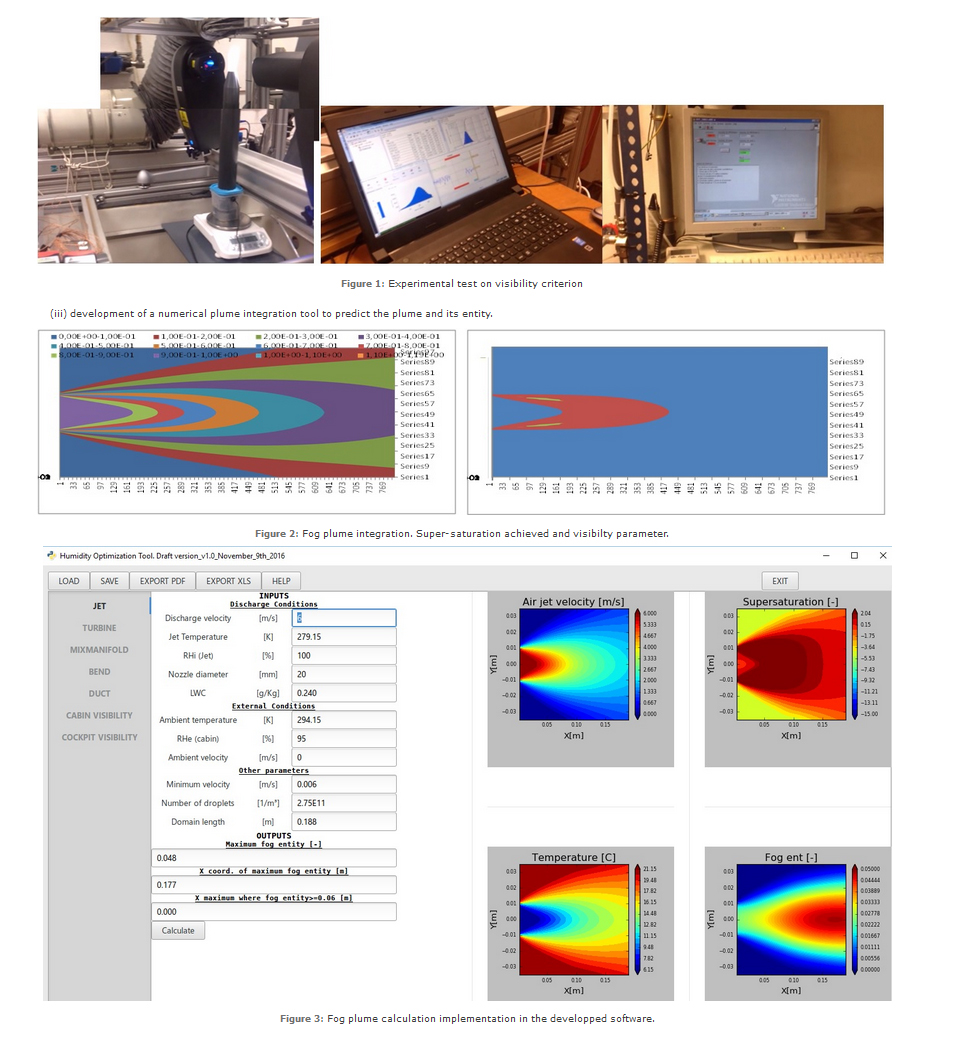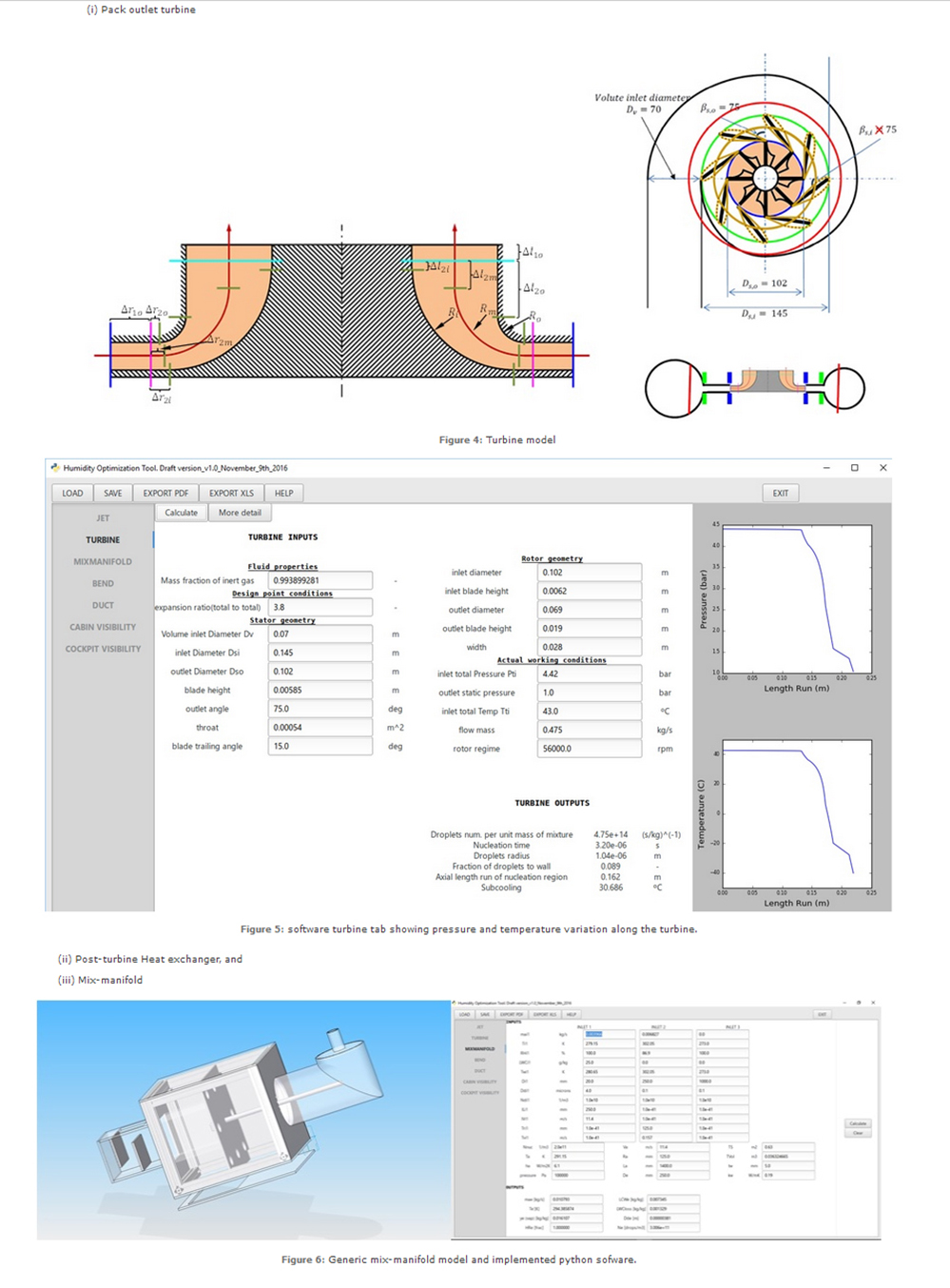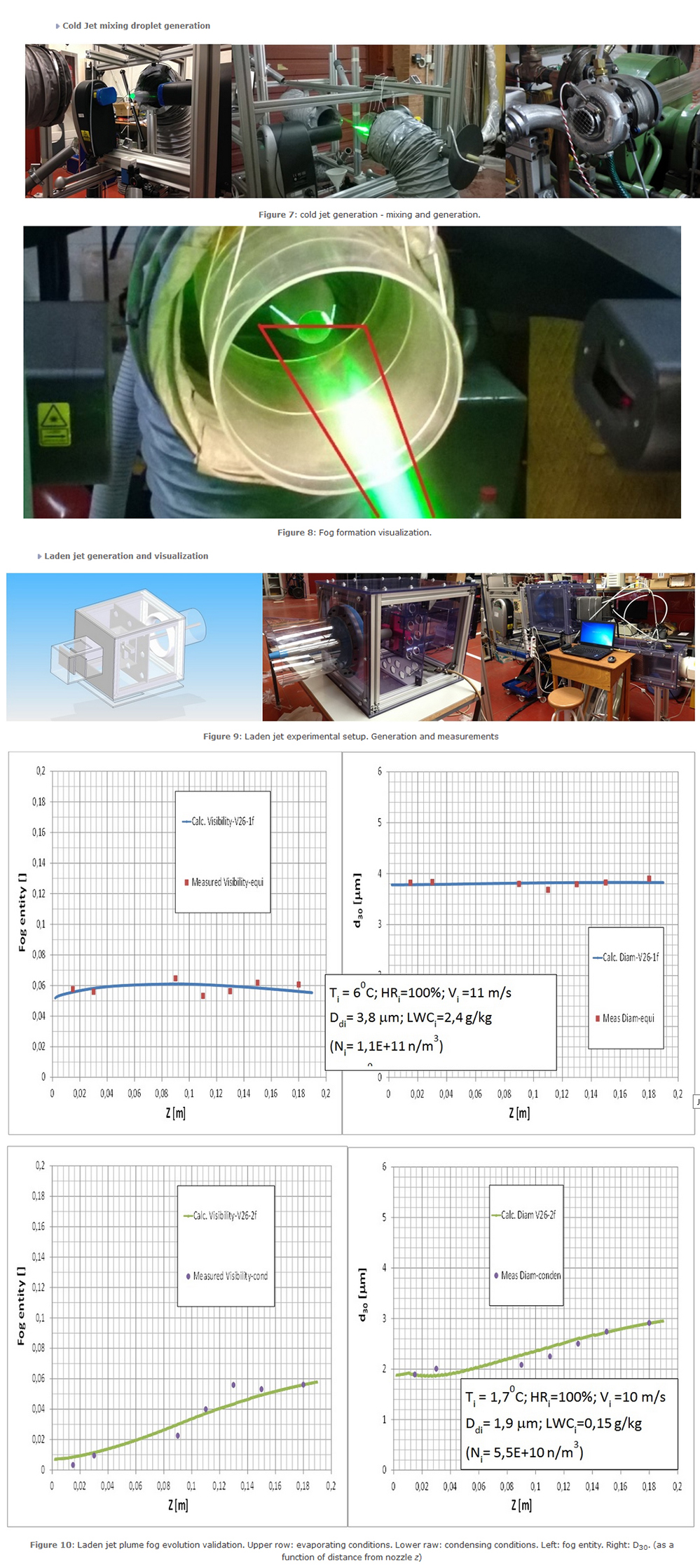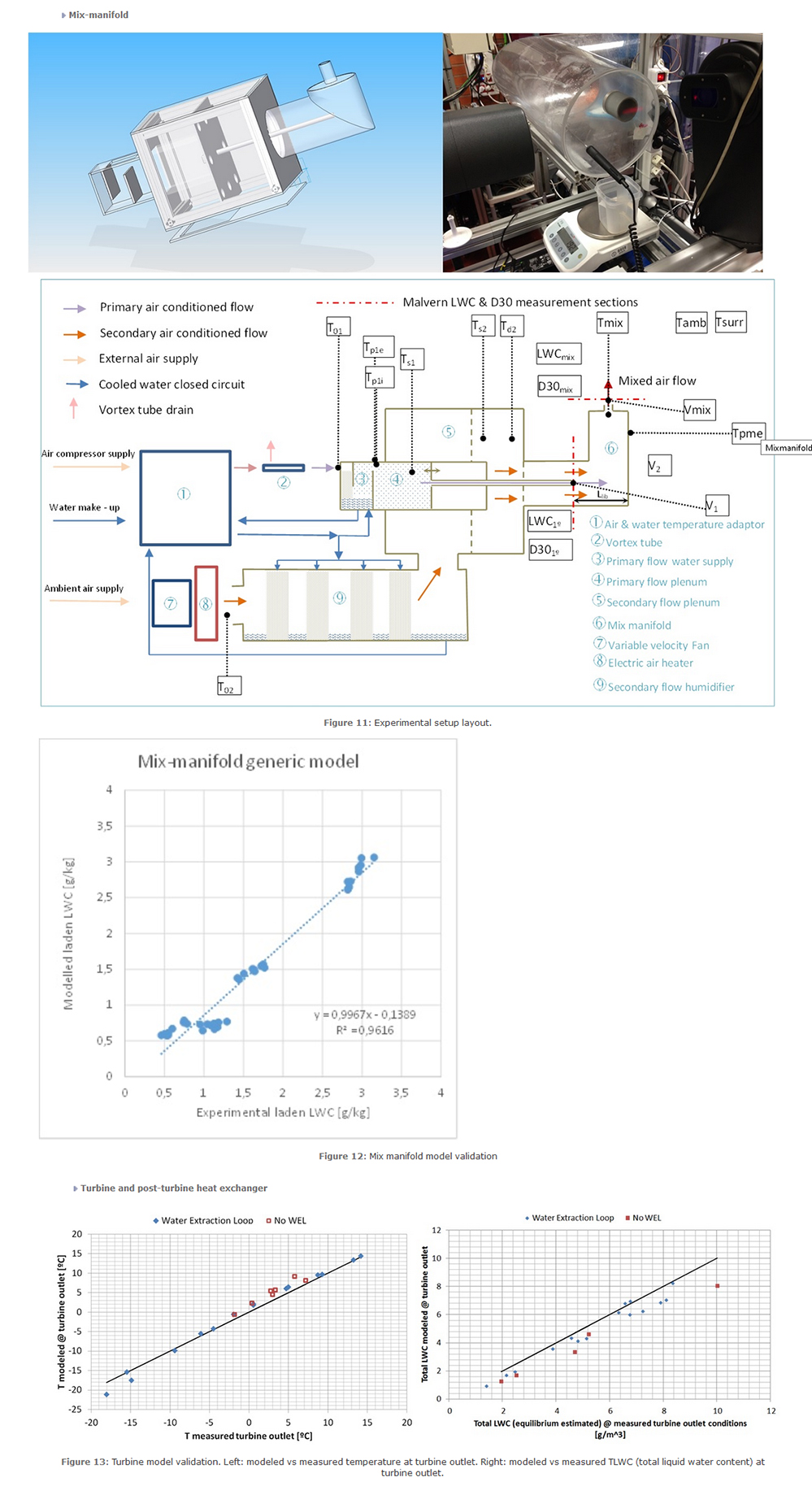Clean Sky HOT-Description of Work
This project has been organized in three Work Packages:
WP1
WP1 is focused on the characterization of the parameters which may have an impact on fog visibility. The objective is:
(i) to stablish a fog entity criterion,
(ii) study the mixing and the amount of fog generated at a nozzle plume and
(iii) predict the plume itself as a function of the nozzle and ambient conditions, including lighting.
This has been done in three steps,
(i) a first bibliographic search followed by
(ii) experimental tests to check the conclusions

WP2
This work package has developed the 0D tool to predict the fog generated at the outlet of the ECS components under study. After a bibliographic study, a detailed theoretical model has been made for each of these components. Based on these models, codes for numerical calculation have been developed on several computation environments, allowing to test and to improve the code. A final version has been programmed in Python with the possibility to run the software both manually and as integrated batch processing for other automatic applications.
The elements are:

WP3
This work package is focused on fine tuning and validation of the 0D tool developed in work-package 2 and the fog plume tool from work-package 1. For this purpose, three measurement campaigns have been accomplished:
(i) Measurements at a discharging nozzle in fog generation conditions
(ii) Measurement at the outlet of an ECS turbine, with and without post-turbine heat exchanger.
(iii) Measurements at a generic mix-manifold model.
For all campaigns the instrumentation bench was developed in this work package. For the first and the third also the experimental test bench was developed.

